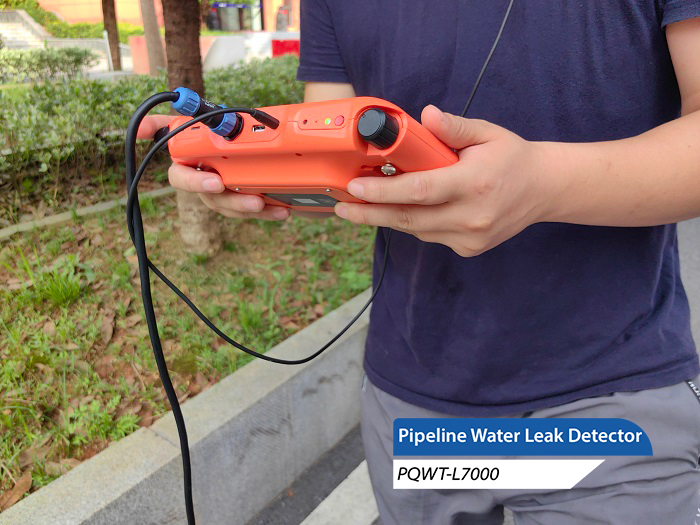pipeline leak detector is an efficient tool for detecting water leaks in pipeline systems. It has a wide range of applications, including urban water systems, industrial pipelines, fire protection systems, etc. It can help to quickly locate the leaks, reduce the losses, and protect the normal operation of the system. This article will introduce the working principle of pipeline leak detector and its use.

The working principle of pipeline leak detector is mainly based on acoustic wave technology. When a pipeline leaks under a certain pressure, the leakage point will vibrate, and this vibration spreads along the wall of the pipeline, and will also be transmitted to the surrounding medium (e.g. soil or air). The leak detector receives these vibration signals through highly sensitive sensors and converts them into electrical signals for processing and analysis to determine the location of the leak.
Specifically, the formation of water leakage sound waves can be divided into the following processes:
1. Vibration caused by water flow: the water flow at the leakage point will produce vibration due to friction with the pipe wall.
2. Acoustic wave propagation: these vibrations in the form of sound waves along the pipe wall and the surrounding medium.
3. Acoustic detection: the sensor of the leak detector captures these acoustic signals and transmits them to the display device after amplification and filtering.
Usage
Detection with a pipeline leak detector usually consists of the following steps:
1. Preparation
Before starting the test, make sure that all equipment is in good condition. The batteries of the leak detector should be fully charged and the sensor and display device should be connected properly.
2. Determine the detection area
According to the water leakage phenomenon, such as water pressure drop, water meter abnormal speed, etc., initially determine the possible leakage area. This can help to narrow down the detection range and improve the detection efficiency.
3.Start Detection
Start the leak detector and adjust the sensitivity and filtering parameters. Gradually move the sensor and listen to the water leakage acoustic signal. As you get closer to the leak, the acoustic signal will increase significantly, and the waveform graph and audio signal on the display device will be more prominent.
4. Determine the leak
Determine the location of the leak by comparing the strength of the acoustic signals at different locations. Record the location of the leakage point and related data for subsequent repair.
5. Review and Confirmation
After the detection is completed, a review can be carried out to ensure the accuracy of the water leakage point. If necessary, multiple tests can be performed around the leak point to eliminate errors.
As an advanced detection tool, pipeline leak detector has an important role in modern pipeline maintenance with its high efficiency and accuracy. Mastering its working principle and use method can not only quickly locate the leakage point, but also reduce unnecessary excavation and repair costs, and safeguard the safe operation of pipeline system. Through the rational use of pipeline leak detector, maintenance personnel can better manage and maintain the pipeline system, extend its service life, and ensure the stability of water supply and other liquid transportation systems.








